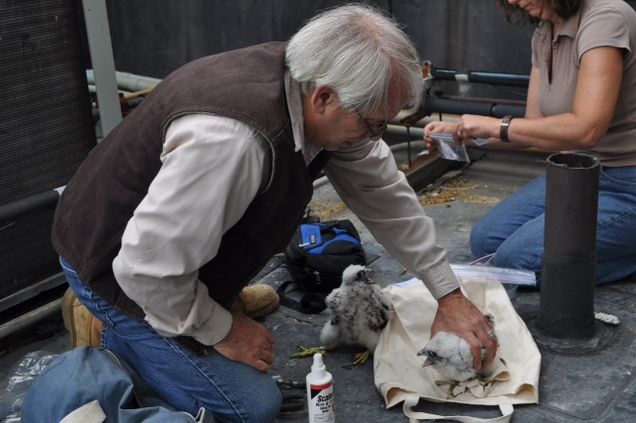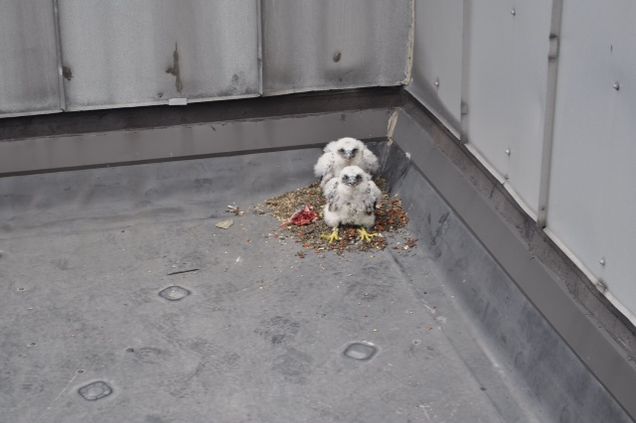BU Collaborates with Mass Wildlife to Protect Falcons

BU strives to provide a pest-free environment by using an Integrated Pest Management program that involves inspecting properties, elimination of food and harborage, identification of pests, and exclusion measures to keep them out of University facilities. While pests can be expected on an urban campus, you might not expect to see much wildlife. Over the years BU has worked to protect and preserve wildlife on campus and its habitat by collaborating with Mass Wildlife. The University’s commitment to sustainability also helps to protect the environment which benefits the campus community, human and animal alike.
In the past BU has helped Mass Wildlife relocate nesting pairs of red tail hawks to the Quabbin Reservoir in the western part of the state. Moving these animals was necessary for their safety as they often roosted on fire escapes outside of active office spaces.
Most recently, Mass Wildlife visited campus to band a pair of newborn peregrine falcons chicks whose family has taken up residence on Commonwealth Avenue. Two bands were placed on the legs of the falcons. The first, on the right leg, identifies the species for a database organized by the North American Bird Banding Program. The second, put on the left leg, is a ‘field readable’ band, meaning that researchers can see the numbers and letters from a distance. They have two numbers and two letters repeated all the way around the band so it can be easily seen at any angle. This second band helps researchers to track the age of the birds and how far they travel.

The chicks were discovered by researchers from Mass Wildlife in early June, soon after they hatched. This was the first set of young for the adult couple, which researchers estimate has been in the area since last winter. Peregrines generally inhabit the same territory year round, but their nesting place may vary from year to year. What makes peregrine nesting unique is that they don’t build their nest. Rather they take over an abandoned nest or use a ledge for protection. At BU, the family is nesting on roofing gravel. Mass Wildlife plans to put up a nesting box on another campus building’s roof in the fall to provide another nesting option for next year.
Though there are currently about a half dozen peregrine families in the Boston area, they used to be much rarer. The use of DDT as a pesticide in the first half of the 20th century caused the population to drop dramatically. The harsh chemical caused falcons to lay eggs with thinner shells that could not protect the chicks. By the 1960’s there were no peregrine falcons nesting east of the Mississippi River. Once the use of DDT was banned in 1972 the population began to slowly rebound. The peregrine falcon was removed from the endangered species list in 1999 and is now one of the most widely distributed birds in the world inhabiting every continent except Antarctica. In addition to the family at BU there are also families nesting at MIT, the Christian Science Administrative Building, Federal Reserve, Tobin Bridge, Quincy Shipyard, and Dear Island Sewage Treatment Plant in Saugus.
To learn more about peregrine falcons, see the fact sheet on the Mass Wildlife website.